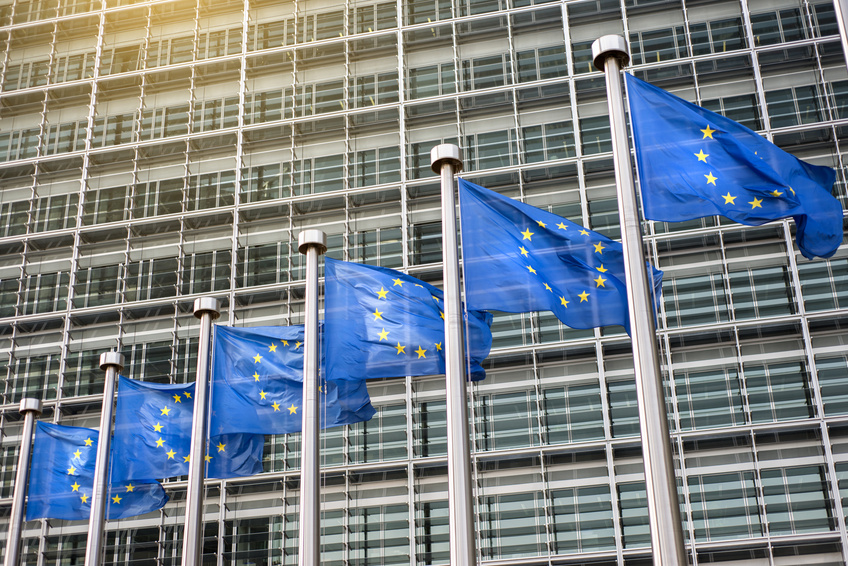While the implications of Brexit on EU product-related laws are still to be determined (see here for our recent alert on the topic), the last few months have seen a number of noteworthy developments for the regulation of products placed on the EU market, as follows:
- EU Conflict Minerals update – On 16 June 2016, the EU institutions announced that a political understanding had finally been reached between the Council, Parliament and Commission on how minerals sourced from conflict-affected areas should be regulated within the EU (the Commission published its original proposal back in March 2014). While the final details of the agreement are still being negotiated, press releases confirm that the new regime will consist of a mandatory due diligence obligation, conducted according to OECD Due Diligence Guidelines, for EU importers of tin, tungsten, tantalum and gold (3TG) and their ores from conflict and high-risk areas. This mandatory obligation does not extend to those manufacturing or importing products containing 3TG (e.g. everyday consumer electronics such as mobile phones and computers) but they will nonetheless be “encouraged” to report on their sourcing practices based on a new set of performance indicators to be developed by the Commission. The political agreement reflects a compromise position between the Commission’s original voluntary self-certification scheme and the Parliament’s desire for mandatory requirements for wider supply chain due diligence.
- REACH “articles” guidance – Following on from the September 2015 decision by the Court of Justice of the European Union on its interpretation of the term “article” in the context of the EU REACH Regulation (see here for our earlier alert), in July 2016 the European Chemicals Agency (ECHA) published for consultation a proposed update to its articles guidance document. Unlike the “quick update” published back in December 2015 (which merely deleted commentary inconsistent with the Court’s decision), the new draft provides substantial guidance on a number of points not explicitly dealt with in the Court’s decision, such as how to measure the content of substances of very high concern (SVHCs) present in paint and coatings added to an existing article, or where two articles are joined together by a substance or mixture. A copy of the draft guidance can be accessed via ECHA’s consultation pages.
- Ecodesign / energy labelling tolerances – The Commission has proposed ‘Omnibus Regulations’ which amend the Ecodesign and Energy Labelling regimes to close an unintended loophole through which some manufacturers might have taken advantage of verification tolerances when measuring the performance of their products. The Commission has clarified that these tolerances, which are specified in the annexes of energy efficiency legislation, are intended for market surveillance verification only. When testing a product against its declared energy value, the tolerances are used by market surveillance authorities to tolerate a degree of difference with the actual measured value, to account for differences in measuring equipment. As currently drafted, the Omnibus Regulations have immediate effect on the 20th day following publication and do not offer a transitional period. This means that, technically, manufacturers would need to ensure from that date that calculations shown in technical documentation, and their interpretation for compliance and/or performance purposes (i.e. figures and claims on labels and product fiche etc) have not used the tolerances. There is a question here as to retrospective application for products already placed on the market, and whether regulators would allow manufacturers reasonable time to amend documentation and product labels. The Omnibus Regulations are currently awaiting adoption by the Commission, the timing of which is dependent on the outcome of an orientation debate that the College of Commissioners was scheduled to have at the end of October on the future of ecodesign policy in general. Once they are adopted, the ecodesign amendment will be published in the Official Journal within a few days, whilst the energy labelling amendment (a delegated act) will first be submitted to the Council of Member States and European Parliament. If neither institution objects to the measure (within 2 months or 4 months if prolongation is requested) it will then be published in the Official Journal and enter into force.
- NLF Alignment Package – Impact on notification obligations and B2B products – Since 2008, a main objective of the EU Commission has been to bring product harmonisation legislation into line with the New Legislative Framework (NLF). As part of this process, recasts of nine product-related Directives, including the commonly applicable Low Voltage (LVD) and Electromagnetic Compatibility (EMC) Directives, entered into force on 20 April 2016. While these Directives were recast solely to include the standard template of “manufacturer”, “importer” and “distributor” obligations set out in the NLF, and no amendments were made to the “essential requirements”, the new Directives do contain two important new obligations in respect of products within their scope:
a. corrective action requirements in respect of non-compliant products; and
b. an obligation to notify the regulator if a product is non-compliant and presents a risk.
There are two key points to note about these NLF provisions. Firstly, although consumer products have always been subject to “backstop” corrective action and notification obligations for safety risks under the General Product Safety Directive (GPSD), where not otherwise provided for in other laws applicable to the product, the meaning of “risk” in the NLF context goes wider. According to the new Blue Guide (see below), if a product does not comply with the applicable essential requirements it presents a notifiable risk, whether or not those essential requirements are safety-related. The other key point is for B2B products. They are not within the scope of the GPSD so previously would not have been subject to its safety-related corrective action and notification obligations. As such, NLF corrective action and notification obligations present entirely new requirements that will need to be reflected in internal compliance procedures for B2B products, in particular the notification obligation for a B2B product that does not comply with applicable essential requirements.
- Radio Equipment Directive – The new Radio Equipment Directive (RED) entered into force on 13 June 2016 repealing the old Radio Equipment & Telecommunications Terminal Equipment (R&TTE) Directive from the same date. Unlike the recasts of the nine Directives discussed above, RED does more than align the existing regime to the NLF. The scope of the regime has changed (terminal equipment is no longer caught) and the essential requirements have been amended to include an increased emphasis on receiver requirements to enhance efficient and effective use of the radio spectrum. As a result of the changes, ETSI (a European Standards Organisation) is conducting a work programme to review the existing harmonised standards in this area and publish new standards as required. A transitional period has been provided meaning that products placed on the market until 13 June 2017 can continue to comply with the old R&TTE requirements rather than the new RED regime.
- Blue Book 2016 – On 5 April 2016, the EU Commission published an updated version of ‘The “Blue Guide” on the implementation of EU product rules’, the most authoritative EU guidance on the application of product-related directives and regulations to goods destined for the EU market. Significant changes have been introduced to bring the Blue Guide up to date with modern sales techniques, particularly sales by online operators – a notable omission in previous drafts. In this regard, new language has been introduced to address explicitly how product-related legislation should apply in the context of online sales. For example, the 2016 version confirms that products offered for sale online by retailers based outside of the EU will be considered “placed on the market” if the website is specifically targeted at the EU and the product in question has completed the manufacturing stage. This is the case even though market surveillance authorities and customs can only undertake a physical compliance check when the product reaches customs in the EU. A list of other changes of note is provided in our recent client alert.
- Accessibility Directive Proposal – In July 2016 the European Parliament’s Committee on Culture and Education adopted its opinion on the EU Commission’s proposal for a new Directive aimed at making certain products (such as PCs and telephones) and services (E-books and E-commerce) more accessible for people with disabilities in the EU. In respect of products, the Commission’s proposal currently takes the form of a CE-marking directive aligned to the NLF and imposing design-related obligations on “manufacturers” with the usual supply chain obligations applicable to “importers” and “distributors”. Some commentators say that the NLF model is not necessarily well suited to achieving the aims of the proposal and that manufacturers may even be prevented from offering the best product for a specific disability, or combination of disabilities, if they have to comply with “blanket requirements” for all products to have the same accessibility features. Instead, industry has recommended the introduction of an obligation to ensure accessibility information is available to consumers, to enable them to make informed buying decisions, and a requirement to report on the presence (or lack) of accessibility features in products and services. While the legislation is currently only at an early stage – neither the Parliament or the Council has adopted a first reading position – how these proposals develop further will no doubt be of interest to those in the ICT sector.
- Energy Labelling update – On 6 July 2016 the European Parliament voted on the Commission’s proposal for a new Energy Labelling Regulation to repeal and replace the current Directive (2010/30/EU). The Parliament did not adopt a first reading position, instead opening the door for the legislation to still be approved on first reading following informal trialogue discussions between the Parliament, Council and Commission. A key proposed change is the rescaling of current labels to remove the A+, A++ and, for some product types, even A+++ categories and revert back to A – G labelling, which is thought to be more effective with consumers. Those category bands will then be rescaled periodically to prevent the upper bands from becoming too crowded. The most controversial change, however, is the proposed creation of a new product database to which manufacturers would have to upload information before a product can be marketed in the EU. Notably, this would require manufacturers to upload technical product information (i.e. technical documentation, test reports/technical evidence etc.) to be kept on a part of the database only available to market surveillance authorities (MSAs). This is a significant departure from the market access requirements typically provided for in EU product-related legislation, which only require manufacturers to provide technical documentation to MSAs upon request.
- Spotlight on substance restrictions non-compliances and POPs – The results of the Swedish Chemicals Agency’s (KEMI) 2014-15 banned substances testing programme, which were published earlier in 2016, have revealed a high incidence of substances banned under the EU Persistent Organic Pollutant Regulation (POPs), REACH Regulation and Restriction of Hazardous Substances Directive (RoHS) in a variety of electrical products. 40.5% of the tested products, which ranged from simple low value electronics such as headphones and torches to more sophisticated high value products such as mobile phones and tablets, contained at least one banned substance. The results also served to highlight the fact that while manufacturers of electrical products are now relatively well versed in respect of REACH and RoHS restrictions, the applicability of POPs to electrical products is less well known; short-chain chlorinated paraffins (SCCPs) were prevalent in tested products despite being banned under POPs since 2012. KEMI’s findings have drawn attention to the high levels of non-compliance in this area and it would not be a surprise if we see an increase in testing and enforcement by EU member state regulators as a result.
- RoHS update – We are still awaiting news from the EU Commission on two key RoHS developments. Firstly, in December 2015 the Commission published a Roadmap indicating that a revision to the RoHS Directive would be published by mid 2016. We now expect that the Commission will adopt this proposal early in 2017. This revision is intended to deal with certain transitional issues connected to the expansion of the RoHS regime to open scope from 22 July 2019, removing what has been referred to as the “2019 hard stop” deadline which would otherwise prevent the “making available” (i.e. resales, secondary market activities) of newly in-scope products even if originally “placed on the market” before the 2019 deadline. The second issue is the fact that the 21 July 2016 expiry date for several of the RoHS exemptions listed in Annex III to the Directive has come and gone without the Commission reaching a conclusion on renewals. While these exemptions remain valid until such time as the Commission reaches its decision (and then for another 12-18 months if the Commission decides not to renew) the delay highlights the administrative difficulties faced by the Commission in handling such a large number of renewal requests. That said, some progress has been made. Earlier in the year, the Oeko-Institut, appointed by the Commission to support it with evaluation of exemption renewal requests, published its renewal recommendations to the Commission, which included new proposed expiry dates (some as early as 2019).




